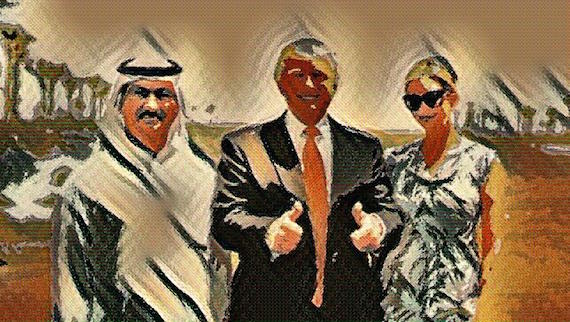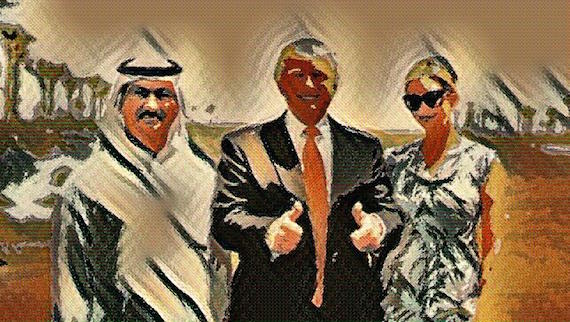By Juan Cole | (Informed Comment) | – –
The incoming Trump administration is riven by a profound division between those determined to avoid deep entanglements in the Middle East, such as Donald J. Trump himself, and the hawks he is putting in key positions, who desperately want to overthrow the Islamic Republic of Iran. This division is made more difficult to interpret by Trump’s own erratic pronouncements, such that he sometimes speaks of, e.g., putting 30,000 US troops into the fight against Daesh (ISIS, ISIL). It is impossible to know whether Trump will disengage even more than President Obama did, or whether the hawks will win out and intervene with covert operations or perhaps more explicitly against Iran. Yet another complication is that Moscow now views Iran as a Russian client in the region, and would really mind if the US did interfere in Iran. Trump is obviously close to President Vladimir Putin, but his cabinet is full of saber-rattlers against the Russian Federation.
The chief challenge facing the Trump administration will be rolling up the phony caliphate of Daesh (ISIS, ISIL) in Syria and Iraq.
In Iraq, the battle for Mosul has stalled because the Iraqi military only has one or two effective counter-terrorism brigades (roughly 3,000 infantrymen to a brigade). They have taken very high casualties, being in the vanguard of the fight, with hundreds dead. At this rate the only effective units of the slightly rebuilt Iraqi military would be used up well before Mosul could be entirely conquered. It is difficult to see how Trump could speed up this fight without committing US ground troops, and if he did that they would likely take high casualties (not popular with the American public). Since the fight is in urban Mosul, a city about the size of Houston, massive US bombing campaigns are not effective (Trump’s macho reference to carpet bombing Daesh has no connection to reality).
In Syria, the only force willing to take on Daesh in its home base of Raqqa and Deir al-Zor provinces in a thoroughgoing way are the leftist, feminist Kurds of the YPG. The Obama administration allied with them, at the cost of alienating Turkey (which considers the YPG a branch of the Kurdistan Workers Party (PKK), which Ankara and Washington classify as a terrorist organization).
Turkey’s President Tayyip Erdogan appears to have made a deal with Russia to cut the YPG leftist Kurds out of any civil war settlement. In return for Turkish acquiescence in the regime recapture of all of Aleppo, Russia and the Bashar al-Assad regime agreed to let Turkey move against the Kurds in the north and to attempt to forestall the Kurdish-American assault on Arab Salafi Jihadi territory, whether that of Daesh or that of groups like the Freemen of Syria and the Levantine Conquest Front (or Nusra Front, the al-Qaeda affiliate).
Trump will have to decide whether to continue with Secretary of Defense Ash Carter’s alliance with the YPG Kurds or whether to give in to the emerging Putin-al-Assad-Erdogan troika. Since neither Turkey nor Russia nor the regime has seemed willing to march on Raqqa and destroy Daesh, Trump will face the problem of how to achieve the results he promised the American public. As President Obama discovered, the most effective forces in fighting Daesh are Shiite and closely allied with Iran, so the US really only has two choices– give up on defeating Daesh and target Iran, or press the fight against Daesh in tacit alliance with Iran. Which course is chosen will be momentous for both the US and the Middle East.
Personally, I think the terrorism capabilities of Daesh will be substantially degraded if they lose their territorial perches, and so would advise finishing them off as soon as possible in alliance with whoever will accomplish it. While I admit that rolling up the so-called caliphate won’t destroy Daesh or entirely stop its terrorism, it seems self-evident that more resources (like ruling a state with 2 or 3 million people) equals more capability. A small declining organization is less effective, and that should be the goal.
There is also the question of the aftermath. Let us say that Daesh/ ISIL is no longer a territorial state by next summer. Then you have to put Syria and Iraq back together, which requires that Sunni and Shiite and Arab and Kurd and other groups make a political set of bargains with each other, with which they can all live. Is Trump capable of pushing the parties to make this deal? Or will he withdraw from the region and leave it to its devices?
Trump has made it clear that he likes the idea of Middle Easterners being ruled by strong men, and that there will be no Bush-style Wilsonian democratization attempts on his watch. He will likely have good relations with President-General Abdel Fattah al-Sisi of Egypt. The bad thing about that policy is that al-Sisi will likely over time become extremely unpopular in Egypt, since he won’t be able to deliver on his extravagant economic promises. As al-Sisi sinks, so will the American reputation, if Trump lionizes him. Russia is already in deep disrepute for propping up the seedy one-party state in Syria, and if Trump backs Putin’s Syria policy, people will hate the US as well.
Despite his admiration for strong men, Trump has gratuitously insulted the rulers of the Sunni Gulf monarchies, saying the would institute an oil boycott to force them to fight Daesh. He has also angered them with his comments on Islam and on barring Muslims from coming to the US. Saudi Arabia is a swing producer of petroleum and president after president has found it essential to have good relations with Riyadh. It is not clear Trump can if he has alienated them so badly.
One place he could usefully take them on is regarding the building disaster in Yemen, where Saudi Arabia and its allies have been bombing civilian infrastructure in hopes of using air power to overwhelm the Houthi guerrillas, could well get blamed on the United States. The US provided the fancy weaponry to Saudi Arabia, and actually helps pick targets and provides logistical support. Hunger, displacement, and other catastrophes are growing exponentially.
Trump has put out mixed signals about Israel/Palestine, as well. At one point he urged a more even-handed policy. Then he appointed a man as ambassador to Israel who more or less believes that Palestinians have no rights at all and all their property may be stolen at will. Likely, the Palestinians will be screwed over, as they usually are by Washington (which only pays lip service, occasionally, to their rights).
Trump has fence mending to do with Turkey’s Erdogan, who appears to believe that the US tried to overthrow him last July 15 (this is not true) and who in the past couple of weeks has begun putting out the false news meme that the US is backing Daesh. Remember, Turkey is supposed to be a NATO ally. Erdogan is not talking like an ally but like an enemy.
Trump has pledged to rip up the UN Security Council agreement with Iran about making sure Tehran’s nuclear enrichment program remains a purely civilian one and cannot be militarized. Trump, like many in the GOP, does not appear to understand that the Iran deal was not bilateral with the US. It is between Iran and the UNSC, including Russia and China. So it is a little irrelevant whether Trump tears it up. Also, the agreement constrains Iran, so ripping it up just removes the constraints. It is impossible for Trump to reassemble the global boycott on Iran that Obama achieved from 2012 to 2015, and American sanctions just drive Iran’s business to China and Russia.
In short, Trump’s announced Iran policy is a mess, and it remains to be seen if he can shape it into something meaningful. As I noted, this process will be complicated by the anti-Iran hawks– Mattis, Flynn, Pompeo, etc., that he has put in high office. (The cabinet secretaries don’t always let the president know what they are really up to.)
The US has intervened too much and too incompetently or venally in the Middle East. Trump’s initial idea of leaving it alone has virtues. But can he really leave it alone? And by the way, backing the strong men is not the same as leaving it alone.





 © 2025 All Rights Reserved
© 2025 All Rights Reserved